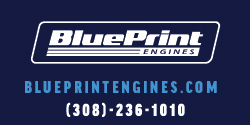Degreeing a cam is to make sure that the tolerance stacking and manufacturing of the crank, timing components, and camshaft allow the cam to be "in" where the manufacturer says it should be. Read the posts about lazy engines with low cylinder pressure and understand this is all preventable. IMO it is a risk and big sign of ignorance not to degree it. Kits are nice, but the only thing that is harder to source is the wheel itself. So if the cost of a kit is so prohibitive, I'd suggest you look at the $22 degrer wheel alone. Shipping will me much less and cheaper dial indicators are easy to come by as is a home made piston stop. You spent the money on the parts and possibly the labor. Why not ensure you get everything you paid for? Dot-to-dot works for stock applications that have no aftermarket parts or machining. Once those are upgraded, you really need to verify it all works right together. I still use a home made pointer, piston stop, and cheapo wheel I bought decades ago.
Springs can be used old provided they have the ability to work with the lift. Comp says remove the inners for any dual spring assembly. You can leave the dampener in the outer. Assemble with inners, break in the cam, and keep the peak rpms below 4K until the inner springs are installed and you're good. You should also be checking for lifter rotation during assembly, I like using a break in paste, not liquid (so it sticks to the lifter faces), and ensuring the engine is not rotated too much before it's fired. That includes installing it, and preoiling. It also has to start immediately once the key is turned, and be able to run for the full break in time without shutting it down.



















